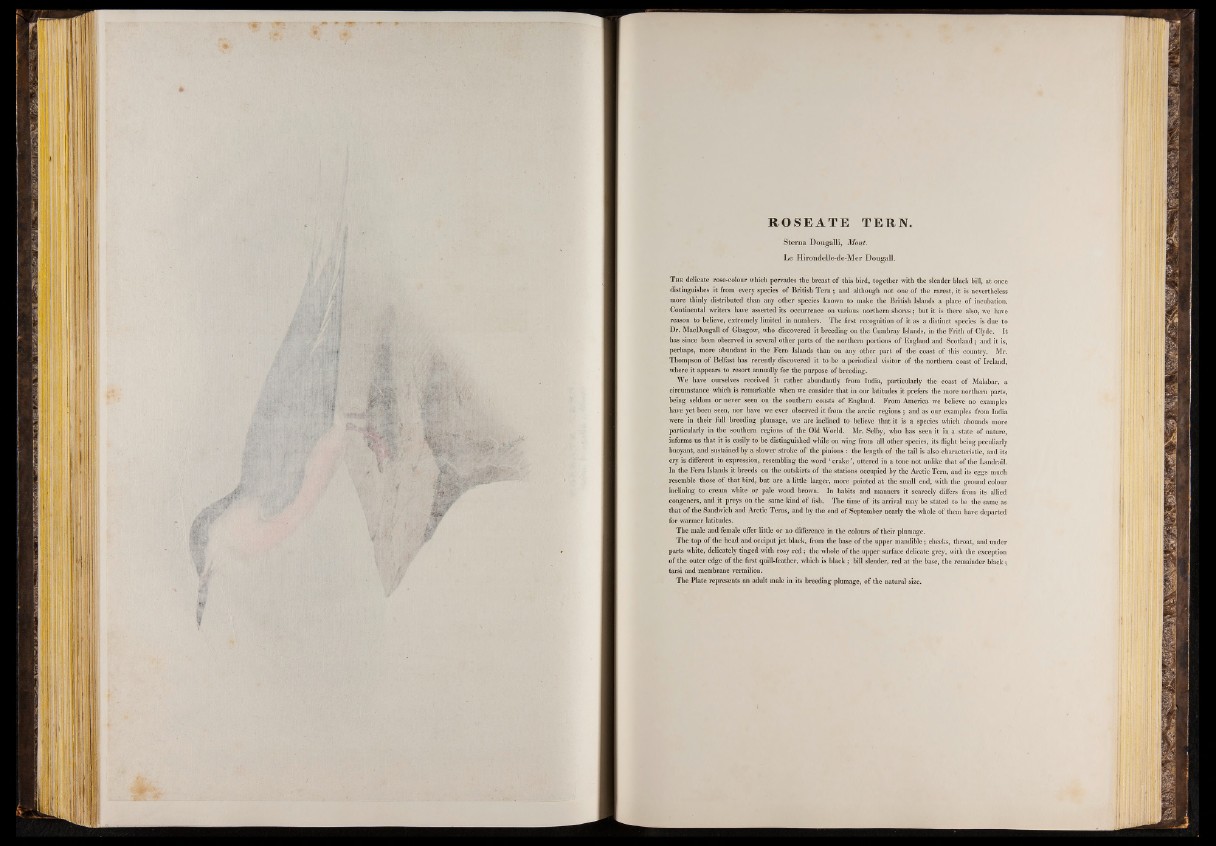
n
J r
RO S E A T E TERN.
S te rn a Do u g a lli, Mont.
L e H iro n d elle-d e-M er Dougall.
T he delicate rose-colour which pervades the breast of this bird, together with the slender black bill, at once
distinguishes it from every species of British Tern ; and although not one of the rarest, it is nevertheless
more thinly distributed than any other species known to make the British Islands a place of incubation.
Continental writers have asserted its occurrence on various northern shores; but it is there also, we have
reason to believe, extremely limited in numbers. The first recognition of it as a distinct species is due to
Dr. MacDougall of Glasgow, who discovered it breeding on the Cumbray Islands, in the Frith of Clyde. It
has since been observed in several other parts of the northern portions of England and Scotland; and it is,
perhaps, more abundant in the Fern Islands than on any other part of the coast of this country. Mr.
Thompson of Belfast has recently discovered it to be a periodical visitor of the northern coast of Ireland,
where it appears to resort annually for the purpose of breeding.
We have ourselves received it rather abundantly from India, particularly the coast of Malabar, a
circumstance which is remarkable when we consider that in our latitudes it prefers the more northern parts,
being seldom or never seen on the southern coasts of England. From America we believe no examples
have yet been seen, nor have we ever observed it from the arctic regions ; and as our examples from India
were in their full breeding plumage, we are inclined to believe that it is a species which abounds more
particularly in the southern regions of the Old World. Mr. Selby, who has seen it in a state of nature,
informs us that it is easily to be distinguished while on wing from all other species, its flight being peculiarly
buoyant, and sustained by a slower stroke of the pinions : the length of the tail is also characteristic, and its
cry is different in expression, resembling the word ‘ crake ’, uttered in a tone not unlike that of the Landrail.
In the Fern Islands it breeds on the outskirts of the stations occupied by the Arctic Tern, and its eggs much
resemble those of that bird, but are a little larger, more pointed at the small end, with the ground colour
inclining to cream white or pale wood brown. In habits and manners it scarcely differs from its allied
congeners, and it preys on the same kind of fish. The time of its arrival may be stated to be the same as
that of the Sandwich and Arctic Terns, and by the end of September nearly the whole of them have departed
for warmer latitudes.
The male and female offer little or no difference in the colours of their plumage.
The top of the head and occiput jet black, from the base o f the upper mandible; cheeks, throat, and under
parts white, delicately tinged with rosy red; the whole of the upper surface delicate grey, with the exception
of the outer edge of the first quill-feather, which is black ; bill slender, red at the base, the remainder black;
tarsi and membrane vermilion.
The Plate represents an adult male in its breeding plumage, of the natural size.